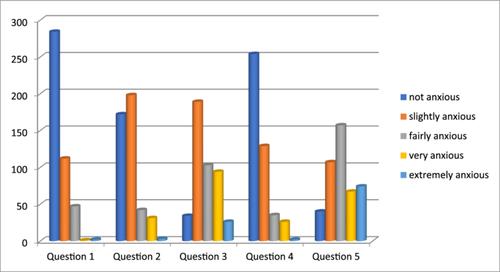Patients with high dental anxiety are found to visit dental offices less frequently and have a higher number of severely diseased teeth so they are at a greater need for intensive oral care and rehabilitation.
The aim of this study was to assess the prevalence of dental anxiety and its impact on the dental status of Nepali adult patients.
A semi-structured questionnaire of the Modified Dental Anxiety Scale (MDAS) in the Nepali version was used for data collection. The data analysis was done using Statistical Package for Social Sciences (SPSS IBM, Chicago, IL, USA, version 24). Variables were calculated as frequency and percentage, while the comparisons of different factors were done using the ANOVA and t-test. A difference with p < 0.05 was considered statistically significant.
The study population consisted of 446 subjects, among them 205 were male (45.96%), 241 were female (54.04%), 357 (80.04%) were married, and 222 (49.78%) were employed. The mean age of the patients was 41.24 years (ranging between 18 and 79 years). Only 41 subjects (9.19%) showed high dental anxiety (MDAS ≥ 19). The mean MDAS for the total study population was 10.81. The highest mean MDAS was seen in the age group 30–39 (11.78) and the lowest mean MDAS was seen in the age group 40–49 (9.64). While comparing dental anxiety among genders, dental anxiety was higher in females (mean MDAS = 11.78) compared to males (mean MDAS = 9.67). Patients having high dental anxiety had a significantly higher number of decayed teeth (p-value = 0.001, t-test).
Oral health and dental status both are negatively affected by dental anxiety. It interferes with dental attendance, service delivery, prevention of dental diseases, and early diagnosis. Thus, dental practitioners have a major role to play in the management of dental anxiety.



